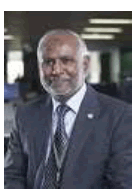Value Added Abstracts - (2020) Volume 0, Issue 0
Published: 28-Aug-2020
Problem Based Learning (PBL) in Medical Education was introduced almost 50 years ago by McMaster University. In this teaching and learning strategy students work as a team to solve complex real-world clinical problems. This introduction had a ripple effect far beyond the confines of the Medical Education. Today hundreds of medical schools worldwide have adopted this strategy utilizing integrated system approach. King Saud Bin Abdulaziz University of Health Sciences opened its door for the first batch in 2004 in its Riyadh Campus and in 2010 at its Jeddah campus. University of Sydney PBL integrated curriculum was employed and over the years it has been gradually amended to suit local needs. It’s a six-year, three phase programme. In Phase I, emphasis is on English language and strengthening the Basic Sciences including Chemistry, Physics, Biology, Anatomy, Physiology, Pathology, Biochemistry, Microbiology, Immunology, Pharmacology, Ethics and introduction to contextual, integrated Problem Based Learning. In Phase II, students apply their Basic Medical Sciences knowledge (Anatomy, Biochemistry, Microbiology, Pharmacology, Physiology, and Pathology) in a system based, contextual process revolving around Clinical cases. Didactic lectures are used to reinforce learning from the PBL. Moreover, learning is strengthened by relevant Clinical Skills sessions. In the Phase III, students go through Clinical rotations in various clinical disciplines, learn clinical skills on real patients as well as on state-of-the-art mannequins and apply their Basic Medical Sciences knowledge to solve clinical cases. In this presentation we have concentrated on Neuropysiology teaching and learning in Phase II.

Biography:
Dr. Sheikh A. Saeed is Physiologist and a Medical Educationist. His research interests are in the area of regulation of Hypothalamic-Pituitary-Gonadal Axis. He served at the department of Biological & Biomedical Sciences at the Aga

Khan University (AKU) Karachi Pakistan (1989-2011). He was intensely involved in developing AKU’s own Problem Based Learning curriculum. He had a short stint at the National Institute of Health in 1997-98 in the Endocrine Reproductive Research Branch. Dr. Saeed moved to King Saud Bin Abdulaziz University of Health Sciences in 2011 and since then he is serving there as the Chairman of Basic Medical Sciences in its Jeddah campus.
Speaker Publications:
1. “Knowledge, behavior and attitudes of dental practitioners towards photodynamic therapy use in dental practice”; Photodiagnosis and Photodynamic Therapy. Volume 20, December 2017, Pages 221-226
2. “Photodynamic activation of irrigation (using different laser prototypes) on push out bond strength of fiber posts”; Photodiagnosis and Photodynamic Therapy, Volume 30, June 2020
3. “Comparison of self-rated oral symptoms and periodontal status among cigarette smokers and individuals using electronic nicotine delivery systems”; Journal of American College Health, 2020.
4. “Prevalence of Type 2 Diabetes Mellitus Among Men in the Middle East: A Retrospective Study”; American Journal of Men's Health, Volume 13, Issue 3, 1 May 2019
24th International Conference on Neurology & Neurophysiology; Berlin, Germany- March 16-17, 2020.
Abstract Citation:
Sheikh Abdul Saeed, Teaching neurophysiology in an integrated problem base learning curriculum: A KSAU-HS experience, Neurophysiology 2020, 24th International Conference on Neurology & Neurophysiology; Berlin, Germany- March 16-17, 2020 (https://neurophysiology.neuroconferences.com/abstract/2020/teaching-neurophysiology-in-an-integrated-problem-baselearning-curriculum-a-ksau-hs-experience)
Neurological Disorders received 1343 citations as per Google Scholar report